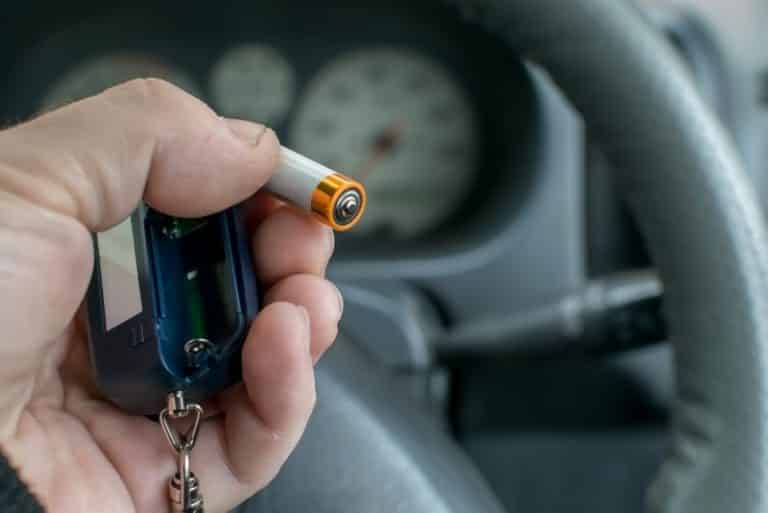How To Know If My Civic Has VTEC? (Explained)
VTEC is an acronym for Variable Valve Timing System and Lift Electronic Control. Although it is also often referred to as Variable Valve Timing System.
Honda first debuted the system on the Acura MDX in 1991, and the Honda Company is the only car manufacturer that uses the VTEC system.
Several models of the Honda Civic, Honda Integra, and Acura MDX have VTEC engines. But how can you tell whether your Honda Civic has VTEC?
Simply put, the VTEC Engine actively alternates between two different profiles to increase engine efficiency and reduce fuel consumption. Read on as I tell you more.
A sure way of knowing whether your Civic is VTEC is if the engine has the word VTEC molded into the valve cover. Honda has also started manufacturing VTEC Engines that don’t have the word on the valve covers. But, you can still identify a VTEC engine by looking at the Engine Bay. Check to see if there is a VTEC hydraulic actuator switch beside the valve cover. The button is light grey and is attached to the head assembly. If it’s there, then viola, You have a VTEC engine!
How Do I Know If My Honda Has VTech?

If your Honda is stock, that is, if it still has the original engine. Chances are it has a VTech engine.
All Honda Civics manufactured from 1994 have VTEC engines, and all Honda Accords manufactured from 1994 have VTEC Engines.
However, you can never be sure. So, you can quickly check the engine to make sure. One of the markers of a VTEC engine is the valve cover.
When Honda first started manufacturing the VTEC engine. Honda usually writes VTech on the engine’s valve cover.
So, if you want to know whether your Honda has VTEC, you can check the engine’s valve cover. Honda VTEC will be inscribed on the valve cover if the engine is a VTech engine.
Honda first used VTech technology on the Integra. The company introduced the first Integra with a VTech engine to the market in 1989.
Honda began using the VTech engine on several car models like the Civic and Acura from that first engine. Does Lotus Use Honda Engines?
Further, Honda installed VTech engines on de Sols. So there’s the likelihood that your de Sol engine may also be a de Sol VTech engine;
Honda manufactured and sold almost a million De Sol cars.
De Sols manufactured from 1993 to 1997 have VTech engines; according to Honda, it sold over 75,000 de Sols with VTech engines.
So if you own a de Sol, which you bought with the original engine, it may have a VTech engine.
Just pop the hood and have a look at the valve cover. It will say DOHC VTEC on the valve cover if it’s a VTech.
If it says 16 valve Honda Motor.Com or just HONDA, it’s most likely not a VTech engine. Nonetheless, it is not a guarantee that your de Sol will have a VTech engine.
It could have been removed and replaced before the car got to you.
How To Tell If VTech Is Working
The point of VTech is to boost engine efficiency and still maintain fuel economy. The engine can achieve this efficiency by altering the internal valve timing lift and timing chain.
While other engines have a single cam lobe and rocker profile, the VTech engine has two cam profiles and a locking multipart locker arm.
Further, since the engine has two cam profiles, one maximizes fuel efficiency and low-RPM stability while the other optimizes high-RPM output. Which Honda Engines Are GDI?
Honda has designed the engine so that the transition occurs seamlessly. And that allows for smooth performance.
The engine computer monitors and controls the switching operation between the two cam lobes.
First of all, before you start saying there’s a problem with your VTech, you should check your oil levels.
VTEC works with oil pressure, and if there isn’t enough oil, well, you know what would happen.
Secondly, warm up your engine first. VTEC will not kick in if your machine is cold. Also, your vehicle has to get going at 20mph before VTech kicks in.
The engine performance and fuel consumption are different with VTech on or off. So, it’s easy to know if VTech is working or if it isn’t working. However, there are some pointers.
- First of all, the system is self-checking. And the output of the engine is entirely different when VTech is off than when it is on.
So, if VTech isn’t working, the vehicle system will detect, and the ECU will show it. - Once you turn on the engine, the ECU runs a check. If the ECU doesn’t detect a change in the engine’s function, it will know that VTech isn’t working, and it will set the Check Engine light on.
So, if you turn on your engine and the check engine light comes on after a while. That could be a sign that VTech isn’t working. - You can hear the VTech engaging; after your engine’s been on for a while, the VTec kicks in, the engine sounds a lot different than it does with VTech.
Some drivers have said the sound is what they love the most about V Tech engines. - Also, if VTech is working, your ECU will not throw any codes. If your ECU keeps throwing codes, then most likely, VTech isn’t functioning correctly.
- Another thing that might help is that the meter voltage should typically be very low until VTec hits. Once VTEC activates, the meter should go up to about 12.
If it doesn’t go up, either V Tech isn’t functioning, or your ECU is terrible.
Also read: Does Hyundai Use Honda Engines? (Read This First)
How VTEC Works – A Simple Explanation
Conclusion
There are a few pointers that you can use to check if your Honda Civic has a V Tech engine. Some V Tech engines have the words Honda V Tech written on them.
And for the cars that don’t have the words written on them, you can still check the valve covers for proof.
However, apart from checking whether your vehicle has V Tech, you can also see whether the V Tech technology boosts the engine’s performance and makes the engine smooth.






